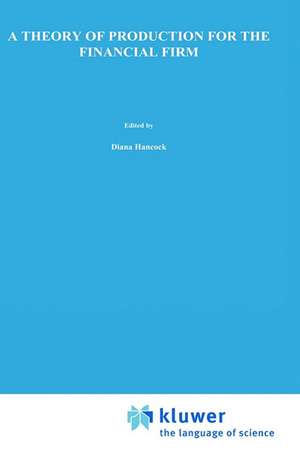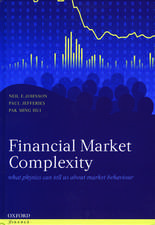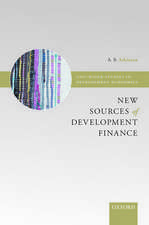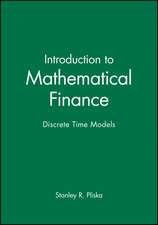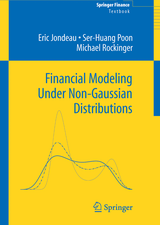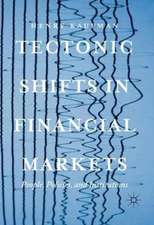A Theory of Production for the Financial Firm: Innovations in Financial Markets and Institutions, cartea 4
Autor Diana Hancocken Limba Engleză Hardback – 31 mar 1991
| Toate formatele și edițiile | Preț | Express |
|---|---|---|
| Paperback (1) | 628.91 lei 6-8 săpt. | |
| SPRINGER NETHERLANDS – 10 oct 2012 | 628.91 lei 6-8 săpt. | |
| Hardback (1) | 641.03 lei 6-8 săpt. | |
| SPRINGER NETHERLANDS – 31 mar 1991 | 641.03 lei 6-8 săpt. |
Din seria Innovations in Financial Markets and Institutions
- 18%
 Preț: 946.72 lei
Preț: 946.72 lei -
 Preț: 392.60 lei
Preț: 392.60 lei - 18%
 Preț: 944.82 lei
Preț: 944.82 lei - 18%
 Preț: 1224.36 lei
Preț: 1224.36 lei - 18%
 Preț: 1225.94 lei
Preț: 1225.94 lei - 15%
 Preț: 637.13 lei
Preț: 637.13 lei - 18%
 Preț: 952.40 lei
Preț: 952.40 lei - 15%
 Preț: 643.99 lei
Preț: 643.99 lei - 18%
 Preț: 945.14 lei
Preț: 945.14 lei - 15%
 Preț: 641.03 lei
Preț: 641.03 lei - 15%
 Preț: 576.24 lei
Preț: 576.24 lei - 15%
 Preț: 644.63 lei
Preț: 644.63 lei -
 Preț: 378.34 lei
Preț: 378.34 lei - 18%
 Preț: 1228.61 lei
Preț: 1228.61 lei - 15%
 Preț: 640.06 lei
Preț: 640.06 lei - 15%
 Preț: 639.25 lei
Preț: 639.25 lei - 18%
 Preț: 834.04 lei
Preț: 834.04 lei
Preț: 641.03 lei
Preț vechi: 754.15 lei
-15% Nou
Puncte Express: 962
Preț estimativ în valută:
122.66€ • 128.08$ • 101.29£
122.66€ • 128.08$ • 101.29£
Carte tipărită la comandă
Livrare economică 15-29 aprilie
Preluare comenzi: 021 569.72.76
Specificații
ISBN-13: 9780792391401
ISBN-10: 0792391403
Pagini: 172
Ilustrații: IX, 157 p.
Dimensiuni: 155 x 235 x 15 mm
Greutate: 0.44 kg
Ediția:1991
Editura: SPRINGER NETHERLANDS
Colecția Springer
Seria Innovations in Financial Markets and Institutions
Locul publicării:Dordrecht, Netherlands
ISBN-10: 0792391403
Pagini: 172
Ilustrații: IX, 157 p.
Dimensiuni: 155 x 235 x 15 mm
Greutate: 0.44 kg
Ediția:1991
Editura: SPRINGER NETHERLANDS
Colecția Springer
Seria Innovations in Financial Markets and Institutions
Locul publicării:Dordrecht, Netherlands
Public țintă
ResearchCuprins
1 Introduction and Summary.- 1.1 The Need for a Theory of Production for Financial Firms.- 1.2 Issues in Technology and Regulation.- 1.3 User Cost Derivation.- 1.4 A Model of the Financial Firm.- 1.5 Data and Data Construction.- 1.6 Specification and Hypothesis Testing.- 1.7 Empirical Results.- 2 Issues in Technology and Regulation of Financial Firms.- 2.1 Introduction.- 2.2 Cost Function Approach.- 2.3 Profit Function Approach.- 2.4 Outputs, Inputs, and the “Classification Problem”.- 2.5 Regulations and the Financial Firm.- 2.6 Concluding Remarks.- 3 User Cost Derivation for Financial Firms.- 3.1 User Costs for Assets and Liabilities.- 3.2 Implementation Problems.- 4 A Model of the Financial Firm.- 4.1 Introduction.- 4.2 An Intertemporal Production Model of the Individual Financial Firm.- 5 Data and Data Construction.- 5.1 Introduction.- 5.2 Labor Services.- 5.3 Materials Services.- 5.4 Physical Capital Services.- 5.5 User Costs for Financial Services.- 5.6 Variable Profits.- 5.7 Concluding Remarks.- Appendix Functional Cost Data on Capital.- 6 Specification and Hypothesis Testing.- 6.1 Introduction.- 6.2 Profit Function and Net Supplies.- 6.3 Regularity Restrictions.- 6.4 Tests of Bank Technology.- 6.5 Econometric Issues.- 6.6 Concluding Remarks.- Appendix Derivation of Hessian - Variable Profit Function.- 7 Empirical Results.- 7.1 Introduction.- 7.2 Elasticities of Transformation, Demand and Supply.- 7.3 Regularity Tests.- 7.4 Estimation of Transformation, Supply and Demand Elasticities.- 7.5 Rate of Return on Capital.- 7.6 Policy Implications: Monetary Policy and Bank Behavior.- 7.7 Tests of Monetary Aggregation.- 7.8 Concluding Remarks.
